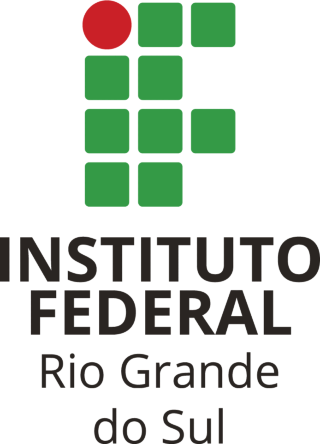Da pedra bruta à joia rara, a leitura que lapida, descobre, brilha e valora
| Title: | Da pedra bruta à joia rara, a leitura que lapida, descobre, brilha e valora |
| Author: | Silva, Janaína Vieira da |
| Abstract: |
Este estudo busca refletir sobre a ação do mediador da leitura, que tem em suas mãos o poder de auxiliar para a formação de um leitor entendedor ou de um simples decodificador. Dessa forma, trago presente a discussão sobre a importância do processo de instigar os educandos à leitura possibilitando-os ver que através dela é possível compreender melhor a si mesmo e a sociedade em que se está inserido e, a partir disso, encontrar perspectivas de acesso a novos caminhos. Para tanto, trago algumas ações de mediação de leitura com o intuito de ilustrar o que aqui apresento como possibilidades. Almejando atingir os objetivos a que nos propomos nesta investigação, buscamos identificar que ações poderiam ser utilizadas pelo mediador afim de contribuir para a formação do leitor. A partir das constatações que tivemos e valendo-nos da pesquisa-ação, foi possível fomentar a leitura como forma de autoconhecimento e de entender o mundo, a fim de que a criticidade através dele fosse instigada. Vale ressaltar que o presente trabalho se divide em quatro blocos: no primeiro, nos preocupamos em apresentar o contexto em que realizamos a pesquisa-ação. Na segunda etapa buscamos aclarar o sentido da palavra leitura tendo como base os estudos dos pesquisadores Vicente Jouve, Alberto Manguel e Michèle Petit. Na terceira parte do trabalho, iniciamos explicando nossa escolha por uma abordagem qualitativa, alicerçadas pelos conceitos da autora Maria Cecília Minayo, uma vez que a autora compreende que pesquisas descritivas baseadas em observações e análises de aspectos subjetivos dos sujeitos de pesquisa, que é o caso desse trabalho, impossibilitam a quantificação. Ainda neste bloco, apresentamos a metodologia que acreditamos ter sido a melhor escolha para esta pesquisa, a pesquisa-ação, uma vez que esta, segundo Michel Thiollent, permite a interação entre pesquisador e pesquisado e finalizando essa etapa exploramos o que Minayo esclarece sobre análise de conteúdo, pois através desse método obtivemos os resultados dessa pesquisa. No terceiro bloco, descrevemos os sete encontros com os sujeitos de pesquisa e seus posicionamentos em relação a cada texto abordado. Por fim, na última fase da pesquisa, analisamos os dados colhidos a cada encontro e, a partir disso, podemos evidenciar que a leitura, quando entendida e não decodificada, transforma o leitor; após uma leitura, jamais seremos os mesmos. As reflexões que os textos nos suscitam, lapidam-nos ao ponto de conseguirmos olhar para nós mesmos e sabermos ler o que estamos vendo. Para, além disso, mostra em que mundo o sujeito “eu” se encontra, quais os desafios desse lugar e o que se precisa compreender para que esse mundo se torne um lugar que possa ser habitado com alegria, igualdade e paz. This study seeks to reflect on the action of the reading mediator, who has on his hands the power to assist in the formation of an understanding reader or a simple decoder. Thus, I bring the discussion about the importance of the process of instigating the learners' reading, allowing them to see that through it is possible to understand better themselves and the society in which they are inserted in and, from that, find perspectives of access to new ways. In this regard, I bring some reading mediation actions in order to illustrate what I present here as possibilities. Aiming to achieve the objectives that we set out in this investigation, we sought to identify what actions could be used by the mediator in order to contribute to the reader's formation. From the findings that we had and drawing on action research, it was possible to foster reading as a way of self-knowledge and understanding the world, so that the criticality through it was instigated. It is noteworthy that the present work is divided into four blocks: on the first, we are concerned with presenting the context in which we perform action research. In the second stage we seek to clarify the meaning of the word reading based on the studies of researchers Vicente Jouve, Alberto Manguel and Michèle Petit. In the third part of the paper, we begin by explaining our choice for a qualitative approach, based on the concepts of author Maria Cecília Minayo, since the author understands that descriptive research based on observations and analysis of subjective aspects of the research subjects, which is the case, makes quantification impossible. Still in this block, we present the methodology that we believe to have been the best choice for this research, the Action Research, since, according to Michel Thiollent, it allows the interaction between researcher and researched and, in the end, we explore what Minayo clarifies about analysis content, because through this method we obtained the results of this research. In the third block, we describe the seven meetings with the research subjects and their positions in relation to each text addressed. Finally, in the last phase of the research, we analyze the data collected at each meeting and, from this, we can evidence that reading, when understood and not decoded, transforms the reader; After a reading, we will never be the same. The reflections that the texts arouse us, lapidate us to the point that we can look at ourselves and know how to read what we are seeing. It also shows in what world the subject “I” is, the challenges of this place and what needs to be understood in order to this world to become a place that can be inhabited with joy, equality and peace. |
| URI: | https://dspace.ifrs.edu.br/xmlui/handle/123456789/916 |
| Date: | 2019 |
Files in this item
| Files | Size | Format | View | Description |
|---|---|---|---|---|
| 123456789916.pdf | 875.8Kb |
View/ |
Texto completo |



